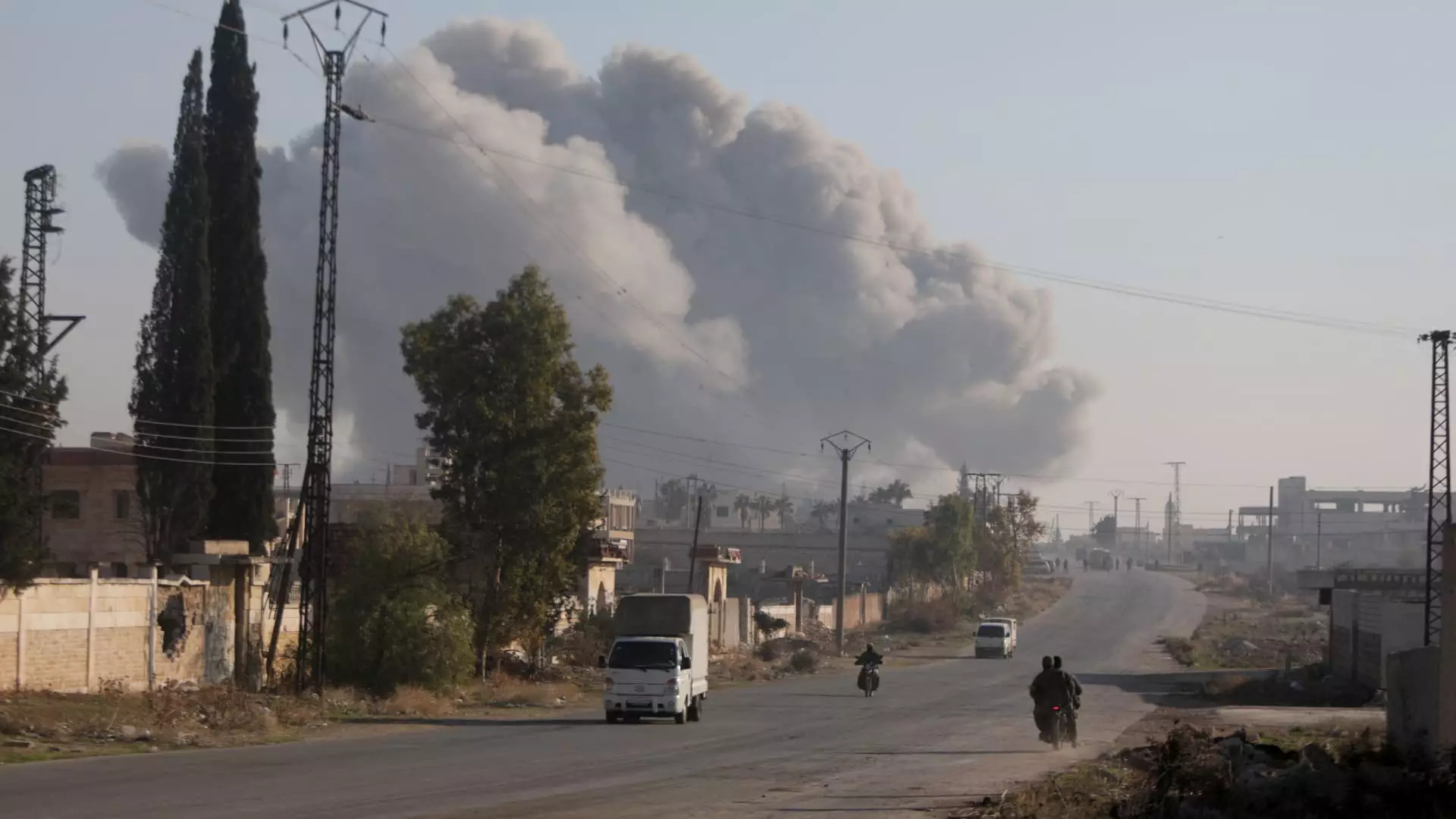The recent breakout of violence in Aleppo, Syria’s largest city, signifies a pivotal moment in a conflict that has experienced fluctuating control and alliances since its inception in 2011. The surprising resurgence of insurgent activity, particularly by the Hayat Tahrir al-Sham (HTS) group, has not only taken residents by fright but has also underscored the vulnerabilities of the Syrian government’s forces—whose previous semblance of control now appears to be deteriorating amid an array of complex geopolitical influences.
On Friday, insurgents mounted a significant offensive against government forces in Aleppo, catching many by surprise as such aggressive actions had not unfolded in the city since its recapture by government troops in 2016. This attack, which followed an escalation of military actions in the region earlier in the week, triggered mass evacuations from neighborhoods on the city’s fringes. Eyewitness accounts detailed chaos as missiles rained down and gunfire erupted, propelling residents to flee their homes in search of safety.
The Syrian Observatory for Human Rights, a prominent war monitor, reported that the furious clashes resulted in a considerable number of casualties on both sides, marking this assault as a historical deviation from the gradually stabilizing status quo. This sudden wave of violence introduces a new layer of instability, heightening the uncertainty enveloping a region already is mired in ongoing conflicts in nearby Lebanon and Gaza.
Experts have pointed to the dropping morale and capability of the Syrian government forces as a significant factor enabling the insurgents’ swift advance. Observers, including former U.S. Ambassador to Syria Robert Ford, have articulated a growing sense of fragility within the regime’s military structure, suggesting that its recent performances may signal a broader inability to maintain the territorial control previously reclaimed with the backing of Russian and Iranian forces.
This situation reflects a critical shift in the geopolitical landscape where Iranian and Hezbollah operatives, traditionally bolstering the Syrian military, are now preoccupied with internal strife and regional confrontations, particularly as hostilities between Israel and Hezbollah escalate. Clearly, the distraction of key allies has left the Syrian government vulnerable, allowing insurgents to seize the opportunity to attack.
The offensive on Aleppo is also underscored by the interplay between multiple theaters of conflict in the Middle East. The recent ceasefire following a two-month conflict between Israel and Hezbollah allowed for insurgents to consolidate their positions and organize for a counter-offensive. The dynamics of simultaneous conflicts in the region present a paradox where military engagements in one arena bolster momentum in another, unleashing unforeseen consequences.
Insurgents assert that their operations are aimed at re-establishing control over de-escalation zones dictated by past agreements involving Turkey, Russia, and Iran. However, with Turkish forces claiming a lack of success in curbing continued government assaults in opposition-held territories, the viability of such agreements remains in question.
Humanitarian Consequences and Civilian Impact
As Aleppo spirals back into conflict, the humanitarian ramifications could be severe. The breakdown in order is instigating further population displacements and eroding the already frayed security situation for civilians. Reports of shelling resulting in civilian casualties in neighborhoods and educational facilities evoke the grim realities embedded in urban warfare.
The prospect of renewed hostilities raises concerns over the civilian population’s rights and welfare. Autonomous military factions operating in a war-stricken area often disregard the implications of their actions on civilian lives, leading to spiraling cycles of suffering and instability.
The recent insurgent advances in Aleppo symbolize a profound shift in the Syrian conflict’s landscape, where years of hard-won government control could be eclipsed by the resurgence of opposition forces. The incomplete foundations of a lasting peace in Syria, coupled with external political dynamics and internal fragmentation, signal troubled waters ahead for the war-torn country. As the conflict drags on, understanding the intricate relationships among the various players and the devastating human costs of warfare becomes crucial to grasping the future trajectory for Syria and its beleaguered populace. Only time will reveal whether this latest development is a mere blip in an ongoing conflict or the beginning of a substantial restructuring in the battle for authority in the region.


Leave a Reply